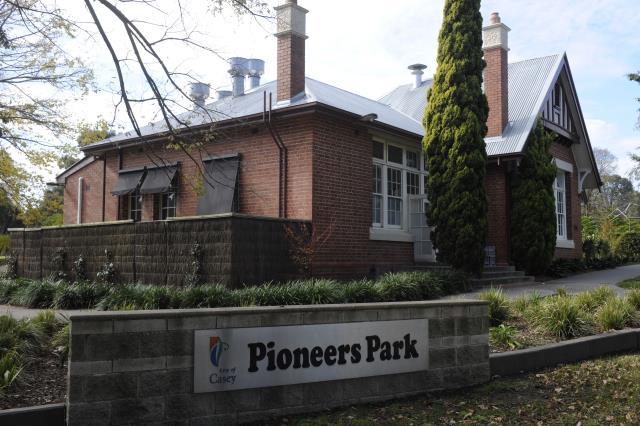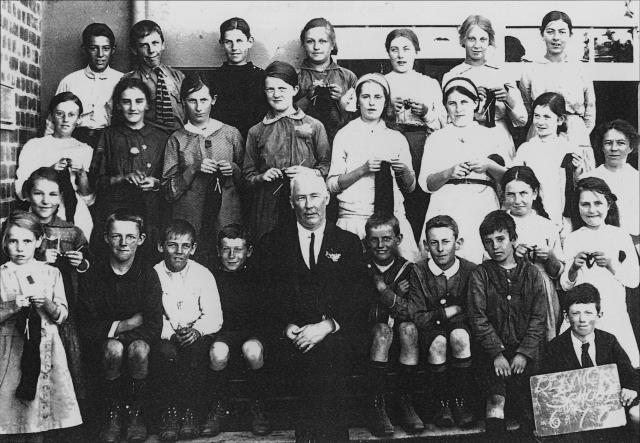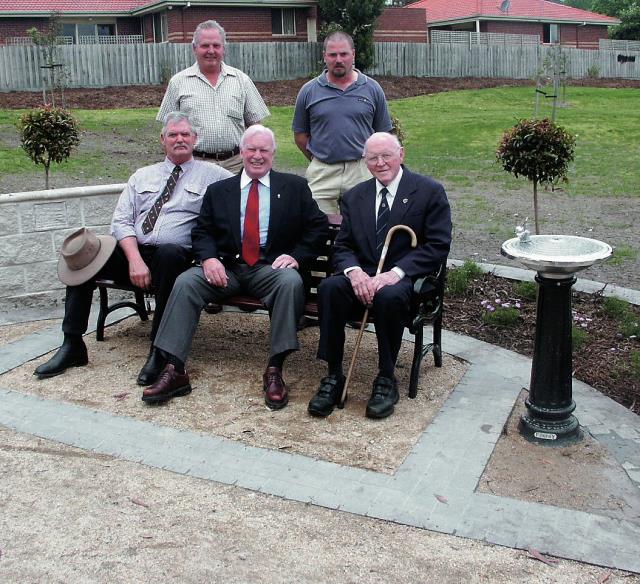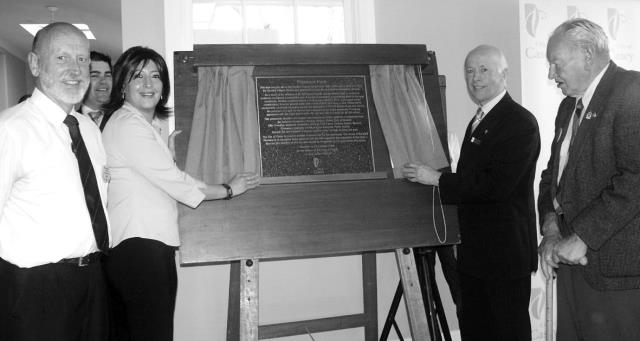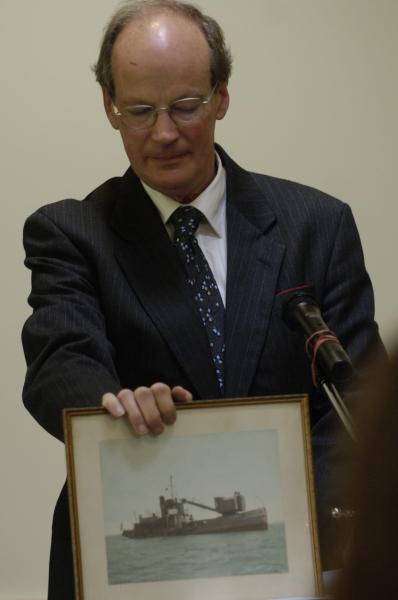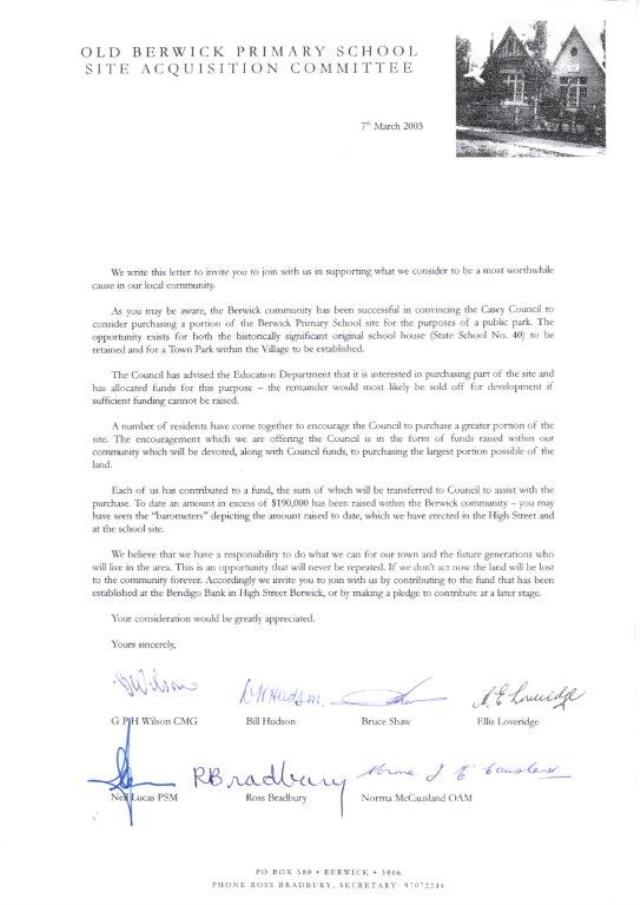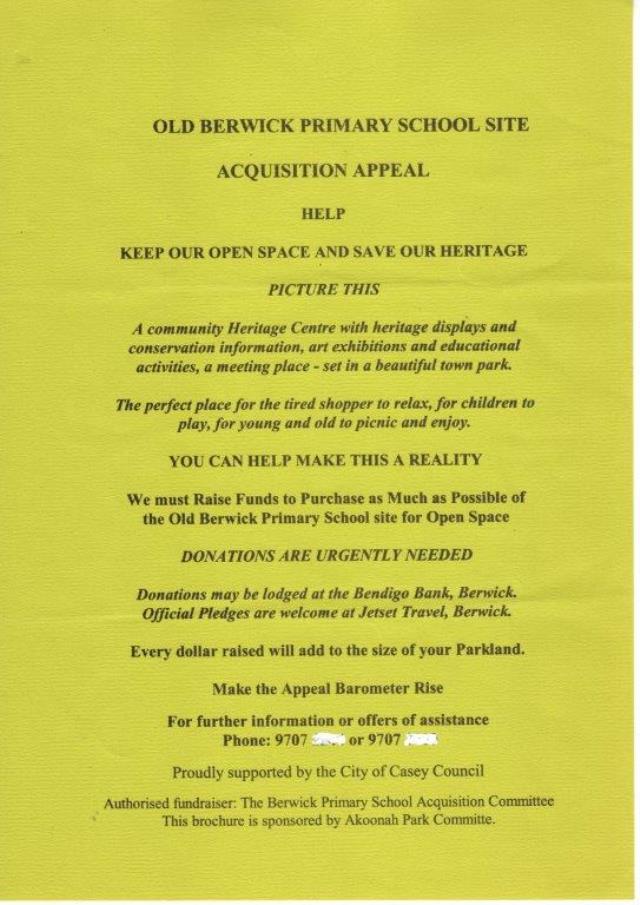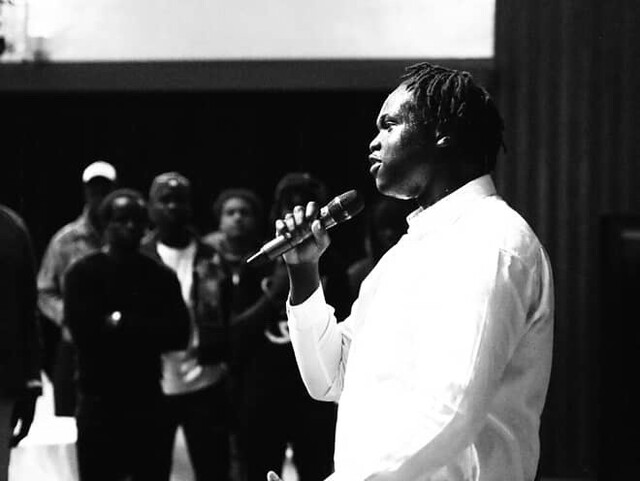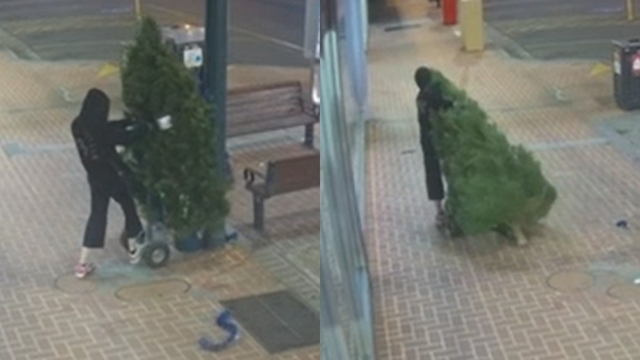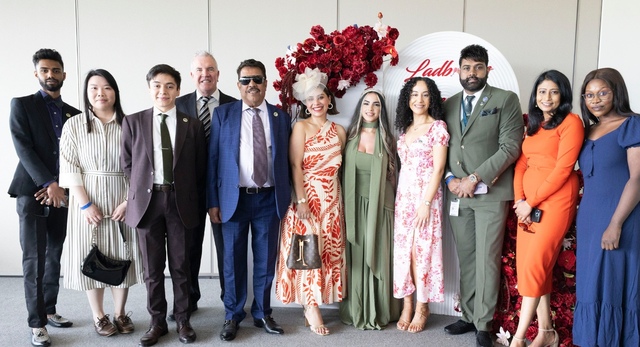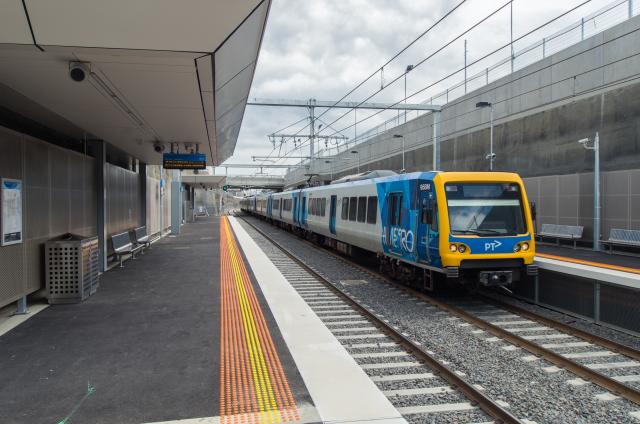Pioneers Park is located on the site of the former Berwick Primary School. The histories of the school and of this park are two interesting stories, as NEIL LUCAS explains in his latest look at the significance of street and place names in the region.
Pioneers Park, Peel Street, Berwick
Berwick Primary School in Peel Street evolved from an original National Board School housed from 1857-63 in a bark hut in Gloucester Avenue, to a Common School No.40 from 1863-69 in a building located on the corner of Wilson and Campbell Streets, to a new brick purpose-built school in Peel Street known as Berwick Primary School No. 40 where it was located from 1869 to the 1990s.
In 1869 the new site in Peel Street had frontage to Peel and Brisbane streets and Lyall Road to the west. The new school was used as a venue for meetings and social gatherings for many of the early years.
In May 1877 a social function was held at the school in conjunction with the awarding of prizes by the local District’s “Board of Advice“ to pupils attending schools in the area. The entertainment included a presentation of illuminated photographs, recitations and songs. The pupils were also involved participating in a debate under the heading “Are the mental capacities of the sexes equal?“!!!
As the school enrolments grew additional classrooms were added and additional land to the east was acquired by the Education Department.
In 1911 local storekeeper Alfred Loveridge provided an oak tree for the school to plant in commemoration of the coronation of King George V. The tree, now almost 120 years old, is known as the Coronation Tree.
A century after the school had moved to Peel Street the school population had increased considerably and portable classrooms had of necessity become permanent fixtures.
In the 1970s the school was still “wrapped” around a house in Peel Street located opposite the northern end of Wheeler Street.
This house was acquired and demolished and the Department then built a grassed playing area which could be used for sporting activities. However, the school enrolment was such that there continued to be inadequate space for the children at recess and lunchtimes.
Accordingly, in the late 1990s the Education Department made a decision to establish a new primary school for Berwick and following the acquisition of land in Fairholme Boulevard, set about preparing the old school site for sale.
The City of Berwick noted this and wrote to the Department seeking the “retention of the historic building on the current primary school site for future community use”.
With a view to maximising the sale price the Department approached town planning staff at the City of Berwick with a view to having the zoning amended from “Education” to “Medium Density” 2 or 3 storey residential given its proximity to shopping and public transport facilities. There was also the notion that the Berwick commercial area could extend northwards onto part of the school site.
When the local community heard of this there was an uproar.
On 18 October 1998 the Berwick and District Community Association called a public meeting which was conducted in the Senior Citizens Clubrooms and chaired by its president Ian Chisholm.
At the meeting many speakers vehemently opposed the plan to create medium density housing or retail commercial activities on the site. It was generally agreed by those present that the council should intervene and have the Department transfer portion of the land to the council for a park.
One speaker, local Geoff Hudson, proposed that the “whole lot should be a park”. The meeting resolved to “1. oppose extension of commercial area onto the primary school site and 2. council negotiate to purchase the whole site for public purposes”.
Amongst many, one person who noted the community’s views was Cr Norma McCausland, who took the matter up at the council table and prosecuted Berwick’s case for the transfer of the site to the City of Berwick by way of purchase.
But there were many other priorities in the minds of councillors, particularly those in the western end of the City who wished to allocate funds to their own areas and not for who they called “the blue-bloods of Berwick”.
In spite of there being some support at council the matter was not really progressing. A generous and game-changing initiative then raised community awareness in the fight for the park.
Long standing Berwick residents, Bill and Helen Hudson and George Wilson CMG decided to (as they described it) “take around the hat” and collected either $10,000 or $20,000 from a number of people who they knew could afford it. They commented “that’ll show them we are serious”.
The community’s case grew from there. A community group was formed to raise further funds and was chaired by local travel agent Bruce Shaw.
This group raised further funds and undertook various activities to support the case. A board was erected in the High Street median indicating by way of a “barometer” the current amount raised and the group arranged various fundraising activities and direct approaches to support its endeavours. In all a total of $241,000 was raised and provided to the council.
Meanwhile at council Cr Norma McCausland kept gaining support and achieved agreement to the sale of some council land to add to the funds being raised by the community.
Then a fortuitous occurrence came about in that the Education Department was desirous of acquiring some land from council south of the Berwick township.
A brainwave generated between Casey chief executive Mike Tyler and Cr McCausland proposed that a land-swap be investigated between the two parties.
Although a straight land-swap was not achievable, as a consequence of their initiative, an agreement was reached with the Education Department for the council to purchase the whole of the old school site through the transfer of its land south of Berwick together with a payment of $305,000 (most of which had been raised by the community).
Local MP Tammy Lobato had played a key role in having the Government agree to this arrangement. Council then came to hold the title to the whole site – an extraordinary and very well received outcome.
Planning of the site took place and it was decided to remove all buildings other than the original school house with a view to maximising the park area. This was achieved and the works and plantings were completed with the official opening held on 23 October 2005.
A number of organisations contributed to the development of the park – The Andrews Foundation, Heritage Victoria, National Trust Casey Cardinia Branch, Berwick Pakenham Historical Society and the Australian Plants Society.
A gazebo donated by the Rotary Club of Narre Warren is located in the centre of the park, and in the north-east section there is a water fountain donated in memory of highly regarded local businessman Ellis Loveridge, grandson of Alfred Loveridge, who donated the oak tree referred to earlier.
The old school building is now operated as a cafe Primary @ Pioneers Park and as a heritage centre and shop by the local branch of the National Trust.
The decision to name the park Pioneers Park was on the basis that there are pioneers in each age, not just those who first came to the area.
The pioneers referred to in the name of this park are all those who fought for its establishment.
The plaque recording the opening reads – “The choice of the word Pioneers is to recognise those generous citizens who supported the acquisition of this land – they are the pioneers of this era who should be recognised by the generations who follow”.

